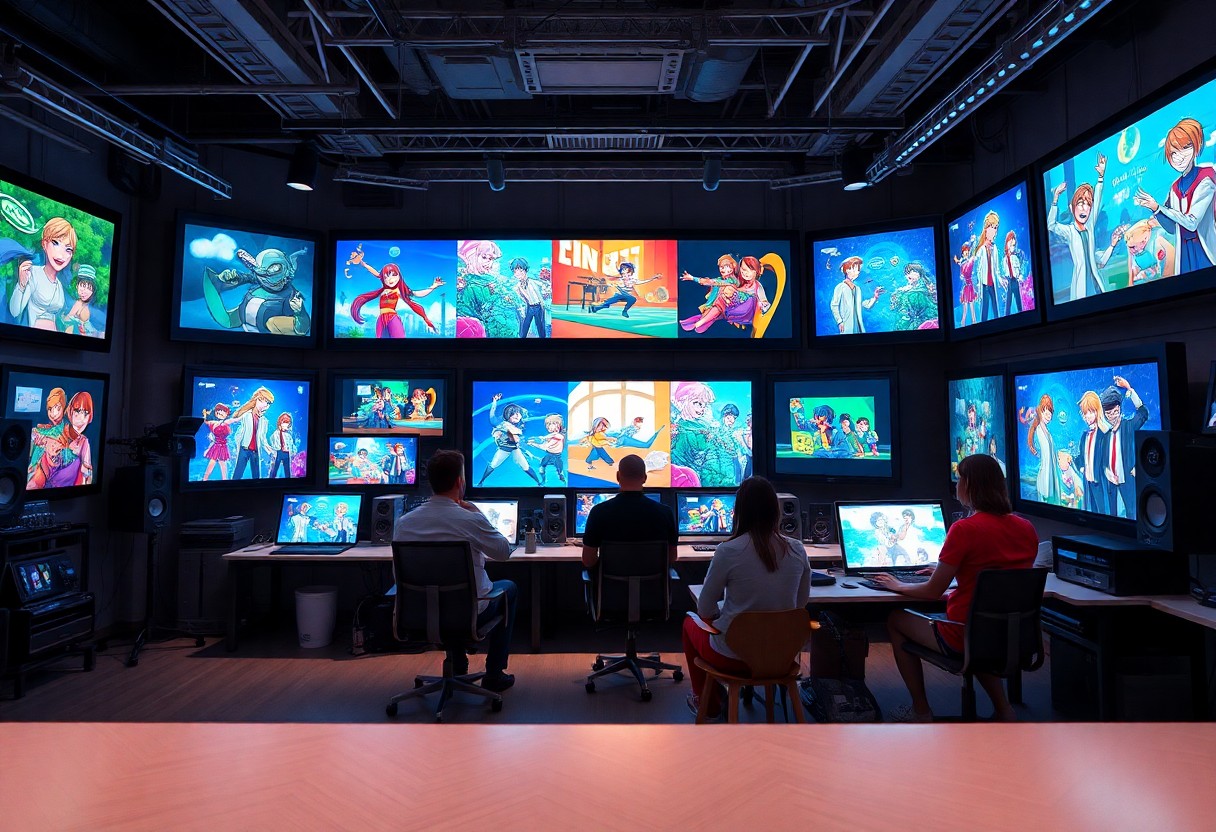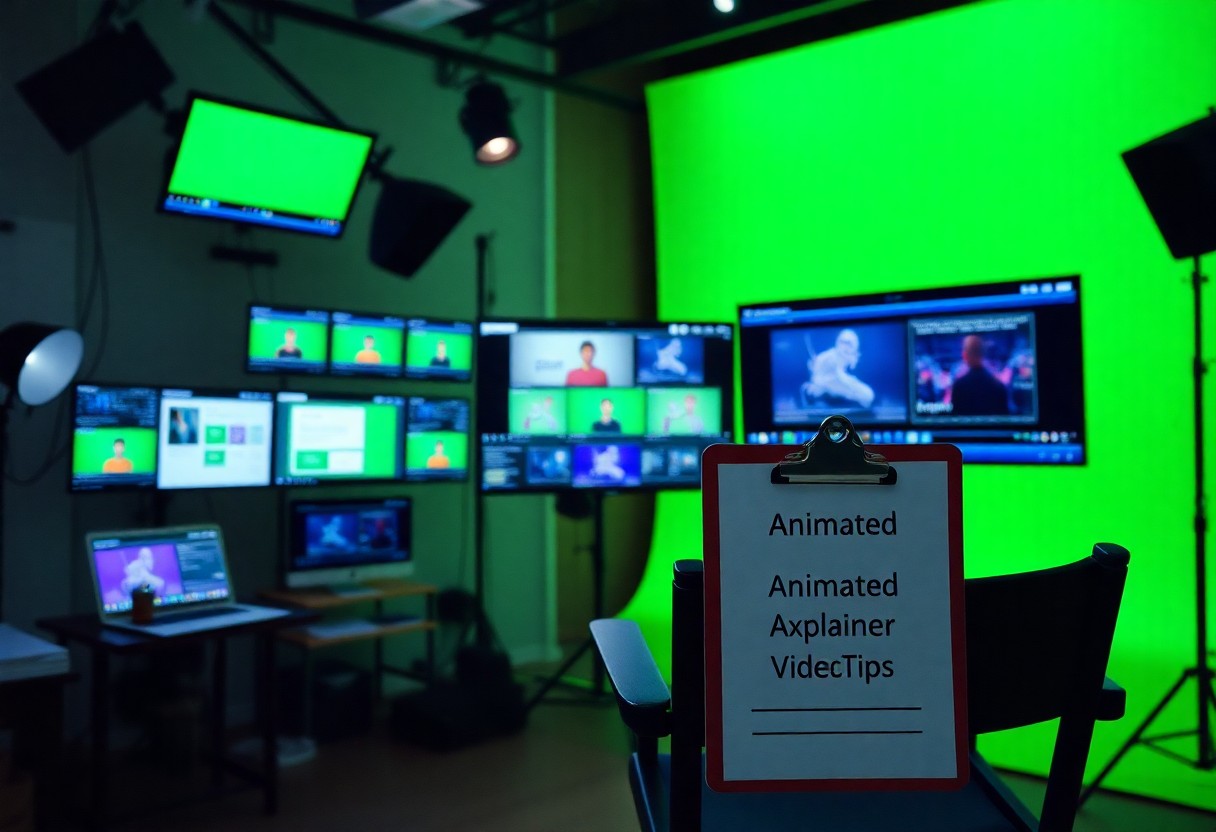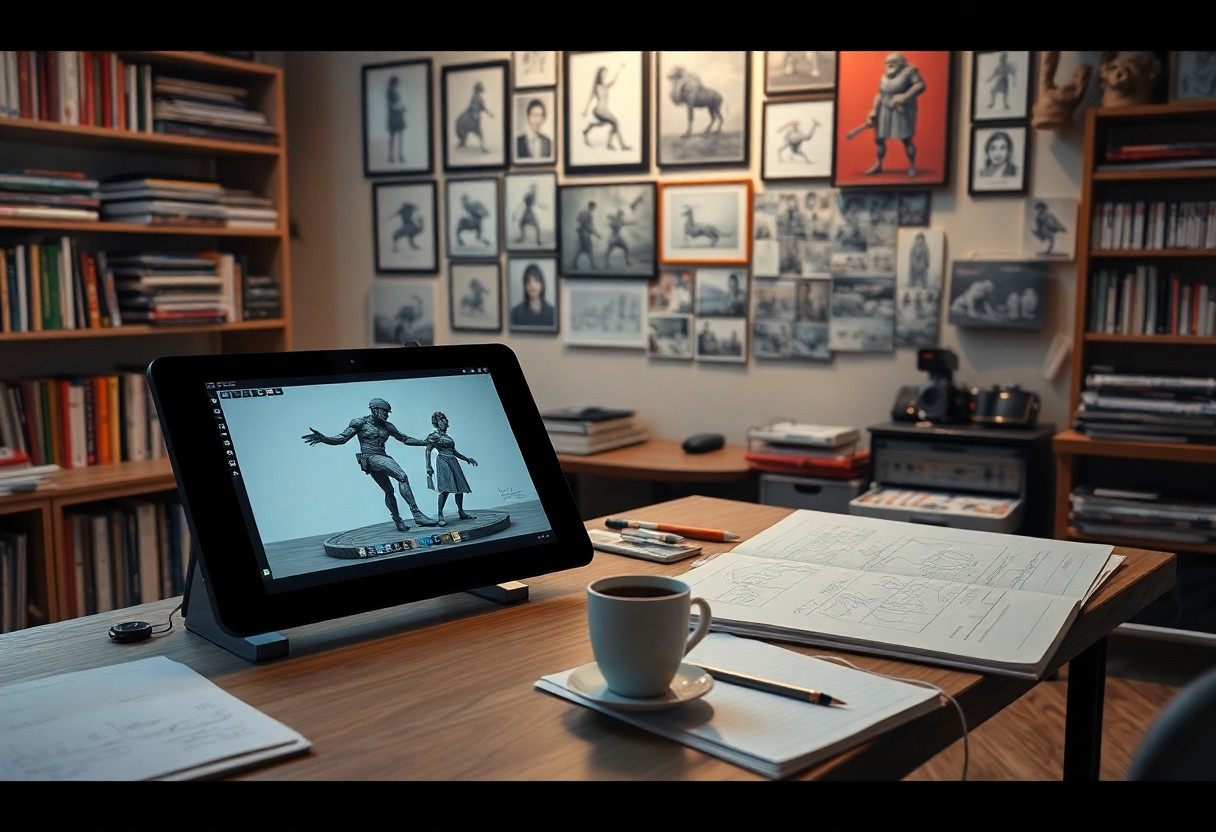
Aug 08, 2025
2D vs 3D Animation – Which Style Is Best for Your Brand?
2D and 3D animation are both powerful tools that can bring your brand’s message to life. In this post, I will guide you through the advantages and disadvantages of each style, helping you make an informed decision. While 2D animation often offers a quicker production time and a more nostalgic feel, 3D animation provides a modern look and a sense of depth that can captivate viewers. By understanding the unique characteristics of both, you can choose the best style that aligns with your brand’s vision and goals.
Key Takeaways:
- 2D animation offers a simpler and often more cost-effective approach, ideal for brands looking for a clean and minimalistic aesthetic.
- 3D animation provides depth and realism, making it suitable for brands that want to showcase detailed products or create immersive experiences.
- The target audience plays a vital role; younger audiences may respond better to vibrant 2D animations, while more mature audiences might prefer the sophistication of 3D.
- Brand personality and message should guide the choice of animation style; playful brands might lean towards 2D, while more serious brands may opt for 3D.
- Consider the long-term application of the animation style; 3D can be more versatile for various media, while 2D can be easily adapted for different platforms.
The Aesthetics of Branding: 2D vs 3D
The choice between 2D and 3D animation not only impacts the way your story is told but also the overall aesthetic appeal that resonates with your audience. Each style brings a unique set of visual characteristics that can either enhance or detract from your brand image. Brands with vibrant, engaging colors might thrive with 2D animation, while those looking for a more lifelike representation might lean towards 3D to showcase depth and realism.
Visual Style and Brand Identity
Incorporating either 2D or 3D animation into your brand identity dictates the visual language you communicate. 2D animations often present a playful and casual vibe, perfectly embodying companies targeting a younger demographic. On the other hand, 3D animations can convey sophistication and innovation, making them suitable for tech or luxury brands.
Emotional Appeal and Audience Connection
The emotional connection your animation creates can significantly influence brand loyalty and customer engagement. 2D animations often evoke nostalgia and charm, establishing an intimate connection, especially with audiences seeking comfort. Conversely, 3D animations can captivate viewers through realism and immersion, fostering a dynamic relationship between the brand and its audience.
For instance, brands like Pixar have shown the power of 3D animation to evoke a broad spectrum of emotions. The lifelike quality of their characters allows for deep emotional storytelling that resonates with viewers of all ages. Alternatively, simple 2D animations, like those used in educational content, can create a friendly and relatable atmosphere that encourages learning and engagement. The key is understanding your target audience and aligning your animation style with the emotional experience you aim to deliver.
Cost Analysis: Balancing Quality and Budget
Every animation project comes with its budgetary constraints, and it’s vital to weigh your options. While 3D animations often demand a higher investment due to their complexity and longer production times, 2D animations can be more budget-friendly and still deliver strong visual storytelling. Assessing their capability to elevate your brand should guide whether you prioritize investment in quality or stick to budget constraints.
Production Costs and Timeframes
When evaluating production costs, 2D animations typically require less financial investment compared to 3D, as they often involve quicker design processes and less sophisticated software. A 2D animation project can take anywhere from a few weeks to a couple of months, while 3D animation can extend to several months, impacting both your budget and your timeline.
Return on Investment: What to Expect
Understanding the potential return on investment (ROI) from your chosen animation style is necessary. Generally, brands can expect higher engagement rates and conversion metrics with visually appealing animations, leading to increased sales. If you strategically invest in a quality 3D animation, you might see a significantly better response than with a basic 2D alternative.
For instance, brands like Dollar Shave Club utilized engaging 2D animations to capture attention quickly, yielding remarkable returns. Meanwhile, high-end brands like Porsche have successfully leveraged 3D animation to showcase their products’ intricate details, resulting in a more premium perception and relatable ROI. Ultimately, aligning your animation investment with your branding goals and audience expectations can magnify your returns significantly.
Technical Considerations: Tools and Techniques
Understanding the technical aspects of 2D and 3D animation can greatly influence your choice. Each style requires a unique set of tools and techniques that cater to different artistic visions and project goals. I’ve noticed that while both genres demand creativity, they also rely heavily on specific software capabilities, team dynamics, and production workflows.
Software and Skill Requirements for 2D vs 3D
Choosing 2D or 3D animation also hinges on the software and skill levels involved. For 2D, programs like Adobe Animate or Toon Boom Harmony are often favored due to their intuitive interfaces. Conversely, 3D animation typically necessitates using software like Blender or Autodesk Maya, which require a deeper understanding of spatial dimensions and lighting. Skill sets may vary, with 3D animators often needing extensive knowledge of modeling and rendering processes, alongside animation fundamentals.
Challenges in Animation Production
Animation production is fraught with challenges that can vary significantly between 2D and 3D styles. Each approach presents its own unique hurdles, from ensuring fluid motion to maintaining character consistency. In 2D, artists face the task of creating smooth transitions between frames, while 3D animators must optimize their models to prevent rendering bottlenecks during complex scenes. Furthermore, collaborations can become complicated when cultural differences in animation practices or technical jargon between teams arise, requiring strong communication and understanding to mitigate potential setbacks.

Market Trends: What Consumers Prefer
Understanding consumer preferences is central to choosing the right animation style for your brand. Recent market trends reveal that consumers increasingly gravitate towards visually engaging and relatable content. Specifically, 51% of consumers prefer 3D animation for its immersive quality and realistic detail, while 2D animation appeals to 44% for its simplicity and nostalgia. Identifying these preferences can guide your decision-making and help optimize your marketing strategy.
Insights from Recent Surveys and Studies
Insights from recent studies indicate a growing inclination towards dynamic visuals in ad campaigns. A survey of 1,000 adults revealed that 68% are more likely to remember a brand that uses animated content, with 3D fashion campaigns showing a 30% higher engagement rate compared to their 2D counterparts. This data underscores the importance of captivating visuals in driving consumer retention and brand recall.
Analyzing Competitor Approaches in Animation
Looking at competitor strategies can be enlightening when determining the best animation style for your brand. Many leading brands have successfully integrated a mix of 2D and 3D animation into their marketing plans, capitalizing on their unique strengths. For instance, tech companies often utilize 3D animation to highlight product features, while lifestyle brands may favor 2D animation for its authentic and relatable storytelling. By studying these approaches, you can identify what resonates within your industry and adapt your animation style accordingly.
For instance, Apple frequently employs sleek 3D animations to communicate product sophistication and innovation. In contrast, brands like Mailchimp leverage charming 2D animations that invoke playfulness and personality, successfully attracting a playful target audience. Observing and analyzing these approaches not only informs which animation style might support your brand identity but also inspires fresh ideas that differentiate your offerings in a crowded market.
Making the Choice: Factors to Consider
- Brand Identity: What style aligns with your brand’s personality?
- Budget: Are you equipped to invest in more complex 3D animations?
- Timeframe: How urgent is your project?
- Target Audience: What visual language resonates with them?
This careful assessment of various factors will empower you to select the animation style that best fits your brand’s vision and objectives.
Defining Your Brand’s Goals and Message
Your brand’s goals and message are fundamental in steering your animation style choice. If you aim for a playful and approachable image, 2D animation may better convey that light-heartedness. On the other hand, a tech-centric or luxury brand often benefits from the depth and richness offered by 3D animation. Knowing what message you want to send helps you make an informed decision that aligns with your core identity.
Audience Demographics and Preferences
Understanding your audience’s demographics and preferences is vital in making the right animation choice. Are you targeting young children, teens, or adults? Research suggests that younger audiences generally favor 2D animation for its vibrant and dynamic visuals, while older demographics might appreciate the realism and depth of 3D animation. Knowing your audience will greatly influence how you convey your message effectively. The importance of knowing your audience cannot be overstated. For instance, a brand selling gaming products may find that 3D animation appeals more to gamers seeking immersive experiences. In contrast, a children’s educational brand could leverage bright and captivating 2D animation to maintain engagement. By stressing visuals that cater to the habits and preferences of your target group, you can ensure that the chosen style resonates, ultimately enhancing your brand’s appeal.
Final Words
So, as I weigh the pros and cons of 2D versus 3D animation for your brand, it’s clear that the choice hinges on your unique goals and target audience. If you aim for a playful, nostalgic feel, 2D might resonate more, while 3D can provide a modern, dynamic look. My advice is to consider what best aligns with your brand identity and message. Ultimately, both styles offer powerful storytelling potential, so choose the one that makes your vision come alive.
FAQ
Q: What are the main differences between 2D and 3D animation?
A: The primary difference between 2D and 3D animation lies in their dimensions and visual representations. 2D animation is flat and relies on two dimensions – height and width – which makes it ideal for traditional cartoons and simple illustrations. In contrast, 3D animation adds depth to visuals, bringing characters and environments to life with volume and realism. This dimensionality allows for more complex movements and angles, enhancing the overall storytelling experience.
Q: Which animation style is more cost-effective for marketing campaigns?
A: Generally, 2D animation tends to be more cost-effective than 3D animation. Creating 2D animations usually requires fewer resources, including less expensive software and shorter production times. This makes it an appealing option for brands working with tight budgets. However, while 3D animation may involve higher upfront costs, its ability to create visually stunning and immersive experiences can lead to a higher return on investment if executed well.
Q: How do I choose the right animation style for my brand’s identity?
A: When dicking out an animation style for your brand, consider your target audience, brand personality, and the message you want to convey. If your brand has a playful, creative persona, 2D animation might be a better fit due to its vibrant and illustrative qualities. Conversely, if you aim to portray sophistication or technological prowess, 3D animation could effectively communicate those values through its realistic visuals and engagement. Evaluating your brand’s objectives will guide you to the most appropriate style.
Q: Can I use both 2D and 3D animation in my brand’s marketing strategy?
A: Yes, integrating both 2D and 3D animation into your marketing strategy can create a dynamic approach. Utilizing 2D animation for explainer videos or social media content can effectively capture audience attention, while 3D animation can be used for more comprehensive storytelling or product demonstrations. Striking a balance between the two styles allows for varied content that can resonate with a broader audience while maintaining brand consistency.
Q: What are some common industries that benefit from 2D and 3D animation?
A: Various industries leverage both 2D and 3D animation to enhance their visual communication. For example, the entertainment industry frequently employs 2D animation in cartoons and comics, while 3D animation is popular in gaming and film production. Additionally, sectors like healthcare utilize animations to demonstrate complex medical procedures, and the advertising industry utilizes both styles for engaging commercials. Depending on the context, both forms can effectively communicate key messages and engage audiences.




